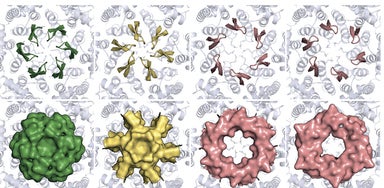Newly Discovered Feature Of HIV Could Inspire Future Treatments
Pores in the virus’s shell allow it to hide and get fuel

Researchers in the United Kingdom have discovered how HIV’s protective shell helps it invade healthy cells without being detected by the immune system.
Scientists knew that to infect healthy cells, HIV copies its own genetic material into DNA that gets incorporated into the cell’s genome. It wasn’t clear, though, how HIV does this without tripping the body’s immune response, or where the virus gets the material to build that DNA.
The answer appears to be the virus’ unique protein coating or shell. The shell, which encircles the entire virus is covered with tiny pores. Once the virus makes its way into the cell, the shell does two things: It conceals the virus, making it unrecognizable to the host cells’ immune system, and it pulls in genetic building blocks through its tiny pores. These building blocks help it create the DNA that the virus later implants into the host cell’s genome.
The scientists were able to design a drug containing a chemical that blocked these pores, bringing DNA assembly to a halt. While this drug can’t enter human cells, it does show that HIV’s pores can be stymied, making them a target for future treatments or improvements to existing ones.
The findings were published today in Nature.
